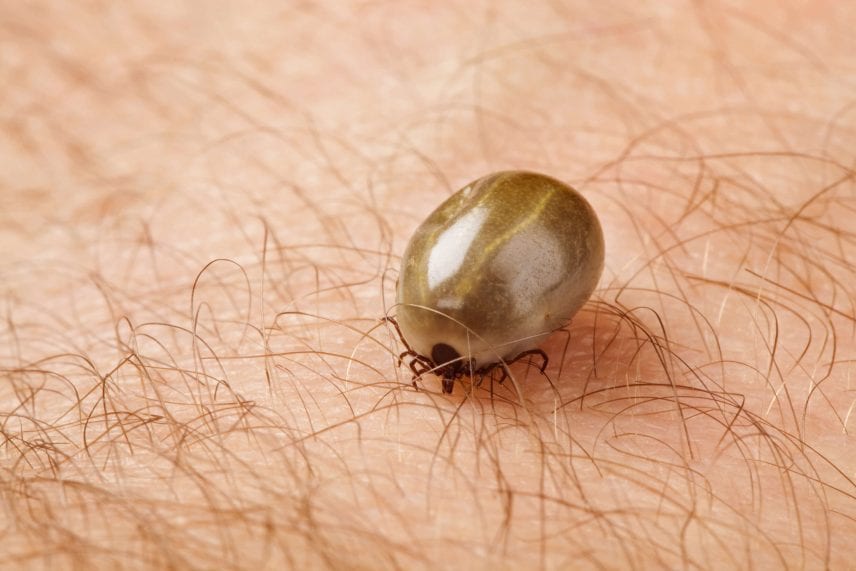For residents in the Northeast, the end of winter typically means fixing up your yard for gatherings with family and friends while resuming outdoor pursuits, such as visiting local parks and hiking wooded trails surrounding the area. Unfortunately, warmer temperatures mean an increase in the risk of encountering ticks, which are plentiful after the relatively mild winter our region experienced. In addition to being a nuisance, these creatures can carry a variety of different diseases that can have a major impact on your health and overall well being. At Pointe Pest Control, we take the threat of tick-borne disease seriously, as should you. The following outlines some of the most common types of ticks found in our area and the types of diseases they may be carrying.
Researchers Uncover 11 Tick Species In NJ/PA/DE Area
The pervasiveness of ticks and the risks associated with tick-borne diseases has increased dramatically across the United States. Unfortunately, northeastern states such as Delaware, Pennsylvania, and New Jersey are among those most affected. According to a recent study published in the Journal of Medical Entomology, researchers at Rutgers University have identified 11 different species of ticks residents are now likely to encounter, either in parks and forests or on wooded areas surrounding their homes. They include:
- Lone star tick;
- Winter tick;
- Rabbit tick;
- Blacklegged tick;
- Woodchuck tick;
- American Dog tick;
- Asian Long Haired tick;
Four other species are also listed for our area but do not have common names as they are more likely to impact wildlife alone. Identified by genus and species, they are Ixodes brunneus, Ixodes cookei, Ixodes dentatus and Ixodes texanus. Of the 11 types of ticks found by Rutgers, nine have traditionally been common in the Northeast but are increasing in numbers. However, the American Dog tick and the Asian Long Haired tick are invasive species that were previously not found in the PA, NJ, or DE areas. All have the potential to leave you suffering a variety of painful and potentially debilitating conditions.
Increasing Numbers Means Increase in Risk of Tick-Borne Disease
Unfortunately, the increasing number of ticks being found in the Northeast means there is an increased risk to residents of contracting tick-borne disease. According to the Centers for Disease Control and Prevention (CDC), potentially serious illnesses associated with tick bites include:
- Lyme Disease: Transmitted by the black legged tick, Lyme disease typically starts with a round rash or legion and includes symptoms such as headaches, fever, fatigue, and a stiff neck. Without treatment, more serious effects are likely to develop over the course of weeks or months and include arthritis, facial paralysis, dizziness, heart palpitations, and inflammation of the brain or spinal cord.
- Rocky Mountain Spotted Fever: Transmitted by the American Dog tick, symptoms include a fever, headache, muscle pain, and a rash. As a bacterial infection, if left untreated it can result in pneumonia, circulatory failure, and damage to the brain, heart, and surrounding tissues.
- Babesiosis: Transmitted by the Black-Legged tick, this disease causes flu-like symptoms, such as headache, fever, and muscle pain. As it affects the red blood cells, it can result in anemia and in more severe cases, eventual organ failure.
- Ehrlichiosis: Transmitted by the Lone Star tick, it has symptoms similar to Rocky Mountain Spotted Fever, but tends to be less severe.
- Tularemia: Transmitted by the Lone Star, Rabbit, or Dog tick, it can be contracted through tick bites or by contact with an infected animal. Resulting in headaches, fever, swollen lymph nodes, and ulcers of the mouth or at the site of the bite, it can impact the lungs resulting in pneumonia and breathing problems.
In addition to the above tick-borne diseases, Penn State University advises that tick bites can also result in tick paralysis. Caused by the toxins a tick injects into its host when feeding, tick paralysis can result in a lack of sensation and coordination, slurred speech, and problems with breathing or brain function. It can occur when a tick attaches to the head or skull area and is more common in children.
Get Help From Our Top-Rated Tick Control Experts
Ticks are increasingly common in our area and a single bite can result in serious illnesses. To make sure you and your loved ones are protected, take the steps needed to prevent a tick infestation in your yard and outdoor areas surrounding your home or business. Call or contact Point Pest Control and request a free consultation to find out how our tick control experts can help.


